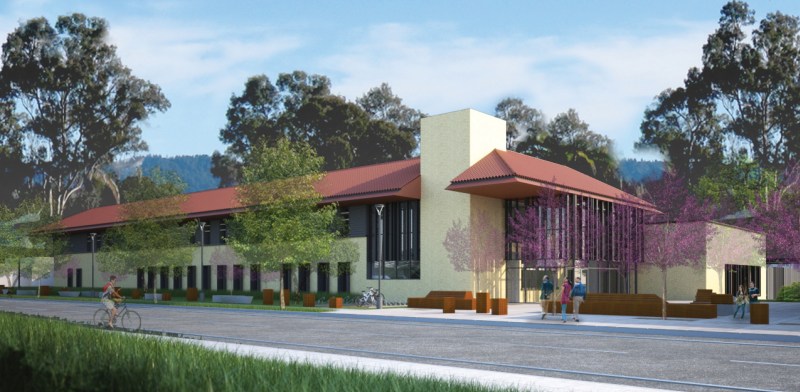Students worry that Stanford’s $33.5 million project to create a Public Safety Building on campus will lead to increased police presence and punitive measures instead of promoting public safety.
The University announced that the building was in the works in its 2019-20 Budget Plan, with construction beginning in the summer of 2019. The building is scheduled to be complete in January 2021, according to Stanford University Department of Public Safety (SUDPS) spokesperson Bill Larson.
Some students were not aware of the building until a November op-ed and series of Instagram posts by police abolition group Abolish Stanford drew attention to the project. Concerns about the creation of the building coincide with nationwide calls for reevaluating the nature and necessity of policing, and as Stanford announced in June a new set of initiatives to combat anti-Black racism on campus.
Larson declined to comment on whether the creation of this building would lead to increased police presence on campus. Larson also declined to comment on student criticism of the new station.
For some students, police-related programs do not come to mind when they think about a building meant to promote public safety.
“If I was thinking of a public safety building, it would be a place people could go to when they’re having food insecurity or housing issues or financial issues,” said Yasmine Mabene ’24.
Abolish Stanford member and neuroscience Ph.D. student Olamide Abiose J.D. ’20 agreed, saying that she thought a public safety building would include mental health resources and could be a place for basic need and mutual aid fundraising to take place. “That, to me, feels like a place that would actually be promoting public safety,” she said.
When weighing the potential benefits and drawbacks of this building, Kory Gaines ’21 said that the value of the building depends on what “public safety” means to the University: “Is it like public safety as we’ve already been imagining it and is it tied to the police?,” he asked. “Or will it be some kind of generative space where people from all across the University try to reimagine public safety?”
Abiose said Abolish Stanford is working to reimagine public safety on campus without police presence. This work included direct action, political education, disseminating information about policing issues on campus to the Stanford community and tying issues with Stanford policing to “a larger conversation about abolition and demystifying what it means.”
Abiose said she sees this new building as “a place where a lot of citations will be issued, a lot of booking and processing will happen for all sorts of different socially defined crimes.”
“What it tells me — and I’m sure a lot of other people — is that, in a time where people are asking for the cutting of this punitive system of policing on campus, Stanford is actually going bigger,” she said. “And it’s kind of a slap in the face.”
The lack of communication surrounding this building and its implications on policing concerns Abiose.
“People are starting to question the role of policing in society, and there was no attempt to have a transparent conversation about that building,” she said.
Most students interviewed said they did not know what the Public Safety Building will be used for, and some did not even know that the building will exist. Larson declined to comment on how the project was communicated to students.
Gaines said the language and wording surrounding the building and its purpose is ambiguous.
According to the project website, the new Public Safety Building will “consolidate all public safety functions under one roof” to accommodate for programs such as administrative spaces, officer briefing rooms, booking and evidence storage facilities and “other public safety related functions.”
Mabene, who found out about the new building via Abolish Stanford’s Instagram post, said it would be helpful if Stanford released a statement explaining what the building is for and how it will be used. Larson did not comment on whether the University would be releasing a statement to the Stanford community about the purpose of the building.
Mabene added that she was struck by the amount of money that Stanford is spending on the creation of this building because University officials have repeatedly referenced budget constraints brought about by COVID-19.
Abiose said money directed toward the Public Safety Building could be redirected elsewhere. She cited various community needs that students raised during a September reverse town hall, such as reinvesting money from policing into mental health resources.
“Things have been outlined, people have done their research, and people have even earmarked certain needs that the community has,“ Abiose said. “Stanford really should engage with that and think about how that building could be used to really promote safety, not just punitive approaches and protecting their own capitalist interests.”
Contact Malaysia Atwater at matwater ‘at’ stanford.edu.
